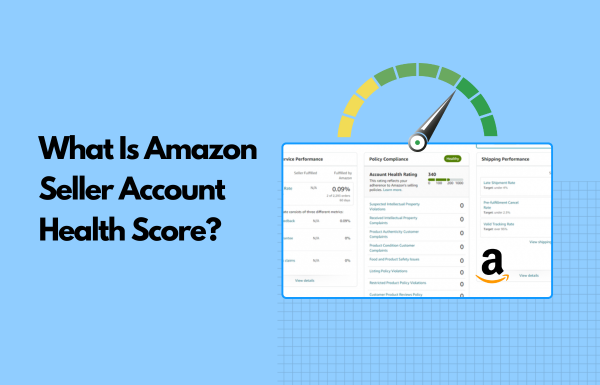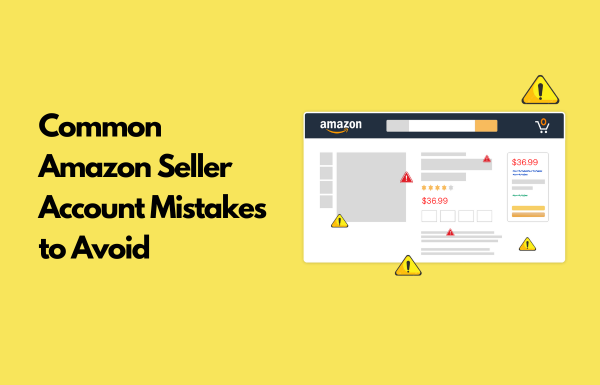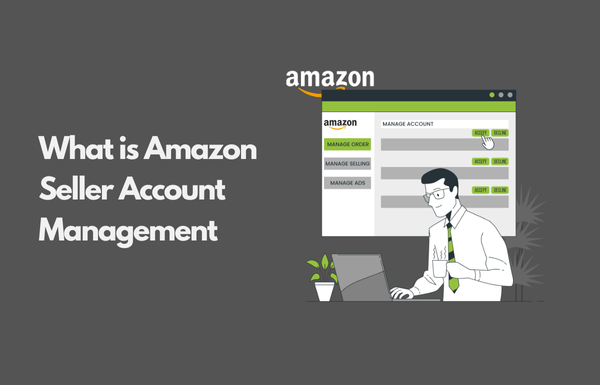If you’re an Amazon seller, you know how stressful it is to log in and see your top products taken down or, worse, your account suspended because your health score dropped.
Sadly, this isn’t rare. Many sellers don’t pay enough attention to Amazon’s strict policies and performance metrics, which directly impact their Amazon account health score, until it’s too late.
Selling great products and offering fast shipping isn’t enough. You also need to keep best practices to maintain a healthy Amazon seller account and stay in business.
Amazon tracks everything through the AHR dashboard. Even one late shipment or policy violation can bring your score down, leading to warnings, selling limits, or suspension.
Yet most sellers don’t understand how the Amazon account health score actually works. We’ve got you covered.
In this guide, you will learn:
- What the Amazon account health score is and how it works
- Where to find it in Seller Central
- What is considered a healthy vs. risky score
- Why AHR matters for long-term success
- Top 10 Amazon seller health strategies to improve your score
- Common mistakes that quietly hurt your account
- What to do if your score is already low
Let us start with the basics and understand precisely what Amazon’s account health score is, which includes several factors, and how it is calculated.
Understanding Amazon Seller Account Health
# What is Amazon Account Health Score?
The Amazon Account Health Score is a metric that Amazon uses to track how well sellers follow its rules, taking into account various factors and maintaining customer satisfaction. You will get an Amazon seller account health score between 0 and 1,000.
The higher your score, the healthier your account is, with a wholesome account health rating starting at around 200.
The health score dashboard on Amazon Seller Central shares what you are doing better and where you need to improve, the report card for your Amazon store.
- High Amazon account health score? You are in good shape.
- Low Amazon account health score? You may be at risk, especially if you have violated Amazon’s policies or received multiple customer complaints.
Amazon uses this account health rating to decide whether a seller account’s overall status is safe, needs action, or is at risk of losing selling privileges or Amazon seller account suspension.
That is why the Amazon account health score is one of the most important numbers every seller should monitor regularly.
# Where to Find Your Amazon Account Health Score?
Finding your Amazon Account Health Score is easy. Just follow these steps:
- Step 1: Log in to your Amazon Seller Central account.
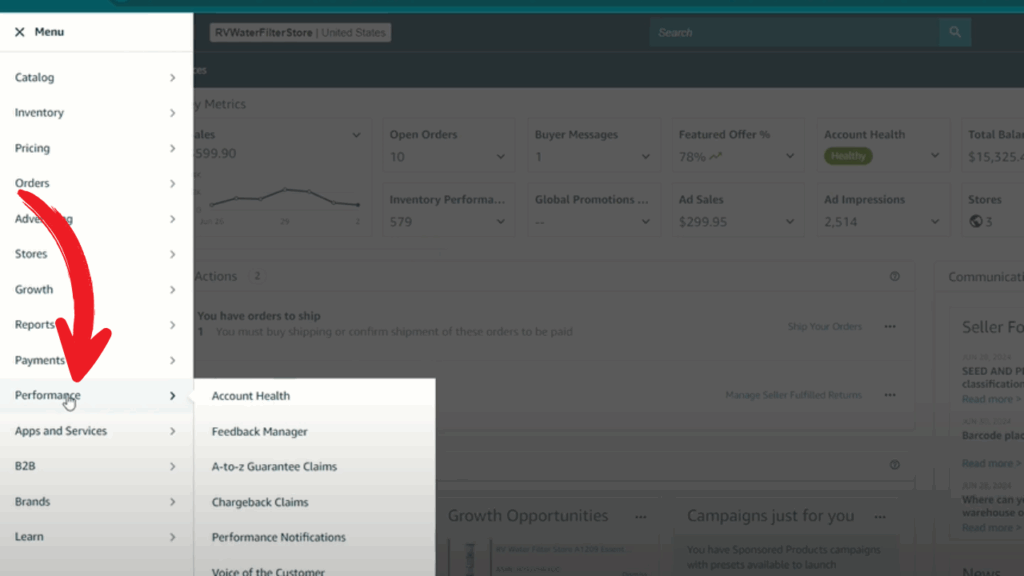
- Step 2: From the top menu, click on “Performance.”
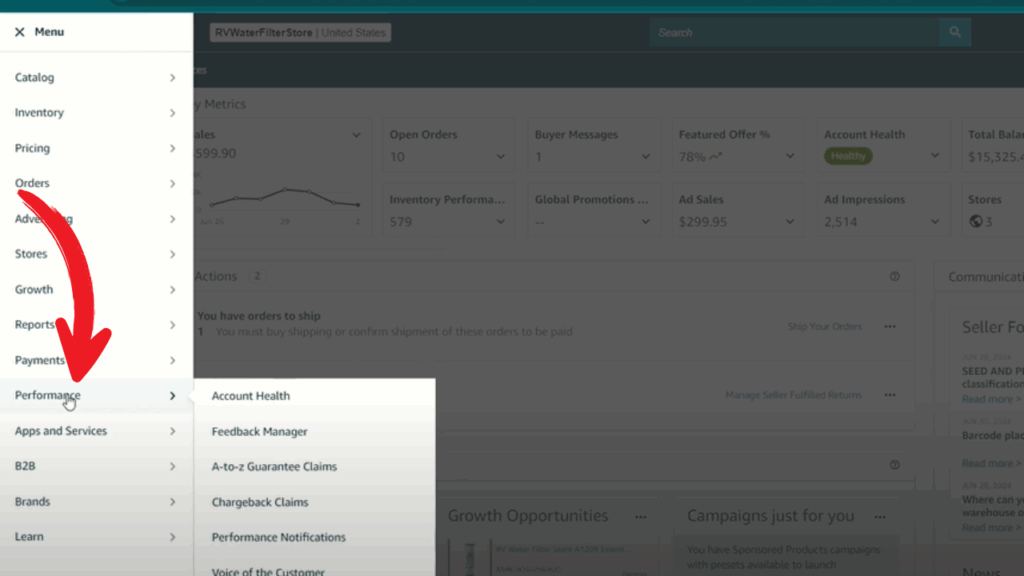
- Step 3: Then select “Account Health” to open your Amazon account health score dashboard.
You will now see your Account Health Rating (AHR), a score from 0 to 1,000 that shows how well you are meeting Amazon’s rules and standards.
This Amazon account health score page also highlights any policy violations, negative feedback, or performance issues that need your attention. When these scores stay in good shape, ensuring a healthy account, your customers stay happy, and your Amazon business remains strong.
# How is Your Amazon Account Health Rating Calculated?
Your Amazon Account Health Rating (AHR) is calculated based on how well you perform in key areas like:
- Order Defect Rate (ODR): Tracks issues like negative reviews, refunds, or chargebacks. High ODR means unhappy customers.
- Late Shipment Rate: Measures the frequency of late shipments. Frequent delays hurt your Amazon Account Health Score.
- Cancellation Rate: Indicates the frequency of orders being canceled before they are shipped. High cancellation rates signal poor planning.
- Valid Tracking Rate: You must upload valid tracking; missing info lowers your account health rating.
- On-time Delivery Rate: Aim for 97% or higher on-time deliveries to maintain trust.
- Policy Violations: Breaking Amazon’s rules can damage your account health.
- Invoice Defect Rate (IDR): For B2B orders, missing or incorrect invoices can impact your Amazon account health score rating.
So, the better you do in these areas, the higher your Amazon account health score will be and the safer your account.
# What is a Good Account Health Rating on Amazon?
Amazon uses color codes and scores to indicate the health of your account.
- 🟢 Healthy (200 – 1,000): No significant issues. You are compliant, and customers are happy.
- 🟡 At Risk (100 – 199): Warning zone. Fix problems now to avoid deactivation.
- 🟠 Unhealthy (<99): High risk of suspension. Urgent action needed
Additionally, Amazon updates your Amazon account health score in real time, so even a single policy violation can cause an immediate drop.
In short, an Amazon Account Health Score of 200 or above keeps your Amazon seller account in the healthy range and safe zone. Anything below that on your Amazon account health score is a red flag and poses a risk of deactivation.
If your score is already in the yellow or red zone, don’t panic, but do act fast. Most account health issues are fixable if you address them quickly.
Pro Tip: Check out our guide on best practices to maintain healthy Amazon seller account to learn the exact steps top sellers use to recover their scores and prevent future violations before Amazon takes action.
Now that you know what the Account Health Score is and how it works, let’s explore why it’s so crucial for your business.
Why Is Amazon Account Health Score Important to Monitor?
Your Amazon Account Health Score is one of the most critical metrics that Amazon uses to evaluate your store’s trustworthiness and overall health. If your Amazon account health score is high, Amazon considers you a trusted seller; conversely, if your Amazon account health score drops too low, your listings or even your entire account may get suspended.
This means your Amazon account health score can make or break your Amazon business. That is why checking it regularly is so important.
Now, let us examine what happens when you maintain a healthy lifestyle and what happens when you do not.
# Benefits of Improving Amazon Account Health Score
A strong AHR protects your Amazon business, boosts performance, and opens doors to long-term growth.
Here is what it helps you achieve:
- Higher product visibility in search results
- More Buy Box wins, increasing your sales potential
- Improved customer trust and positive brand perception
- Early warning and resolution time through Account Health Assurance
- Fewer restrictions on listings, payouts, and tools
- Priority access to premium programs like Vine and Seller Fulfilled Prime
- Smooth support experiences and better platform privileges
- Stable, scalable growth without constant firefighting
Maintaining a healthy score isn’t just about avoiding suspension; it’s about maximizing your business potential. Many sellers struggle to balance daily operations with account monitoring.
If you’re wondering whether professional help is worth it, read our analysis on is it’s worth investing in Amazon seller account management to see how experts protect your score while you focus on growth.
# Negative Consequences of Lower Amazon Account Health Score
Letting your score slide below Amazon’s standards can lead to serious consequences:
- Product listings may be suppressed and become invisible to buyers.
- Your account can be suspended with little to no warning.
- Amazon may demand a Plan of Action, with a short deadline and high rejection risk.
- Your payouts can be frozen, which can disrupt your cash flow.
- Access to tools and features may be limited, which can slow down operations.
- You lose customer trust when repeated service or delivery issues occur.
- Worst case: permanent deactivation of your entire seller account.
Amazon rewards sellers who stay ahead and penalizes those who don’t. And, you have complete control over it.
If you want to stay in the safe zone, here are 10 clever ways to improve your Amazon account health score rating.
Top 10 Strategies to Improve Amazon Account Health Score
Keeping a high Amazon Account Health Score isn’t a one-time job; it takes ongoing work and strong customer service.
Here are 10 top strategies to boost your performance, improve selling activities, and keep your account healthy. Let’s dive in!
1. Review Your Entire Catalog Regularly
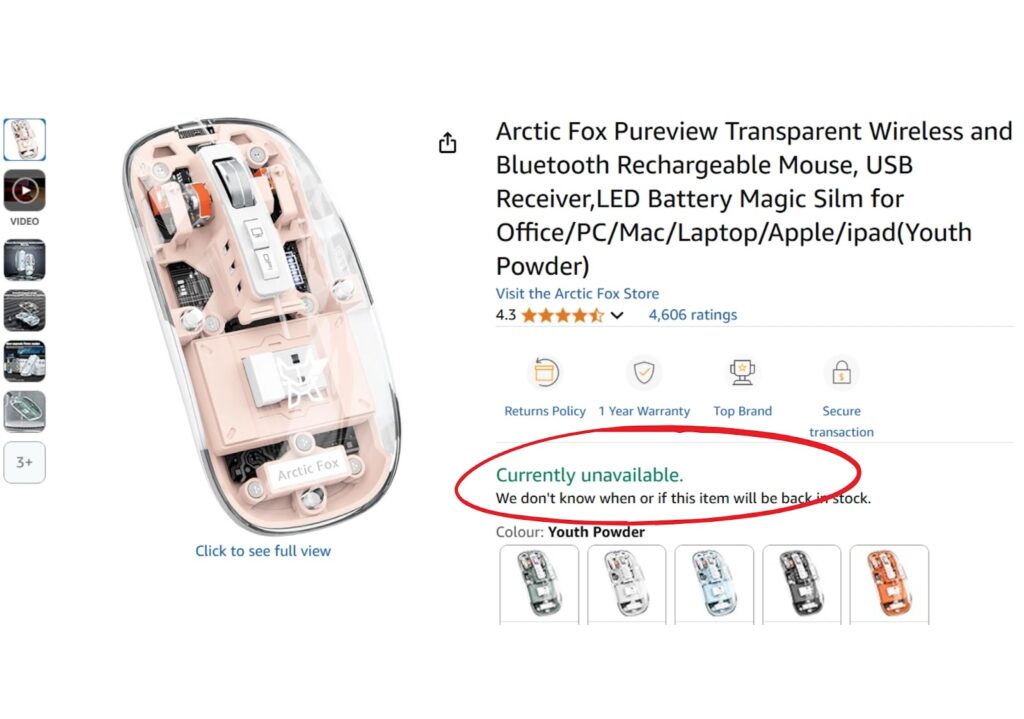
As sellers grow their stores, their inventory can become cluttered with outdated, inactive, or forgotten listings that remain live in their accounts. But Amazon still treats them as an active product listing. If you are flagged for a policy issue due to these inactive listings, it can harm your account, even if you have not sold that item in months.
To avoid this, review your inventory regularly in Seller Central. Close or delete any listings you are no longer using.
This helps you:
- Stay compliant with Amazon’s listing policies
- Prevent unexpected account health violations
- Keep your catalog focused and well-managed
A quick check every couple of weeks is all it takes to reduce risk and maintain your store’s good standing.
2. Deal With Stranded Inventory

Stranded inventory is one of those behind-the-scenes issues that quietly drag down your performance.
These are products that are currently stored in Amazon’s warehouse but are no longer associated with an active listing on the platform. Since they are not linked to a live product page, they can not be sold, but they still count against your performance metrics. If left unaddressed, they can negatively impact your Inventory Performance Index (IPI) and may lead to storage limits or account health page issues.
Here’s how to stay on top of it:
- Go to “Stranded Inventory” in Seller Central
- Check the reason each item is stranded
- Relist, update missing details, or remove the inventory
Doing this regularly helps keep your inventory clean, improves your IPI score, and prevents avoidable account health problems.
3. Amazon Listing Optimization
A poorly written Amazon product listing can confuse buyers, trigger returns, and lead to policy violations, so you must address any policy violations, all of which hurt your account health rating.
To protect customers and your account and build trust with customers by adding Amazon A+ content in your product listings:
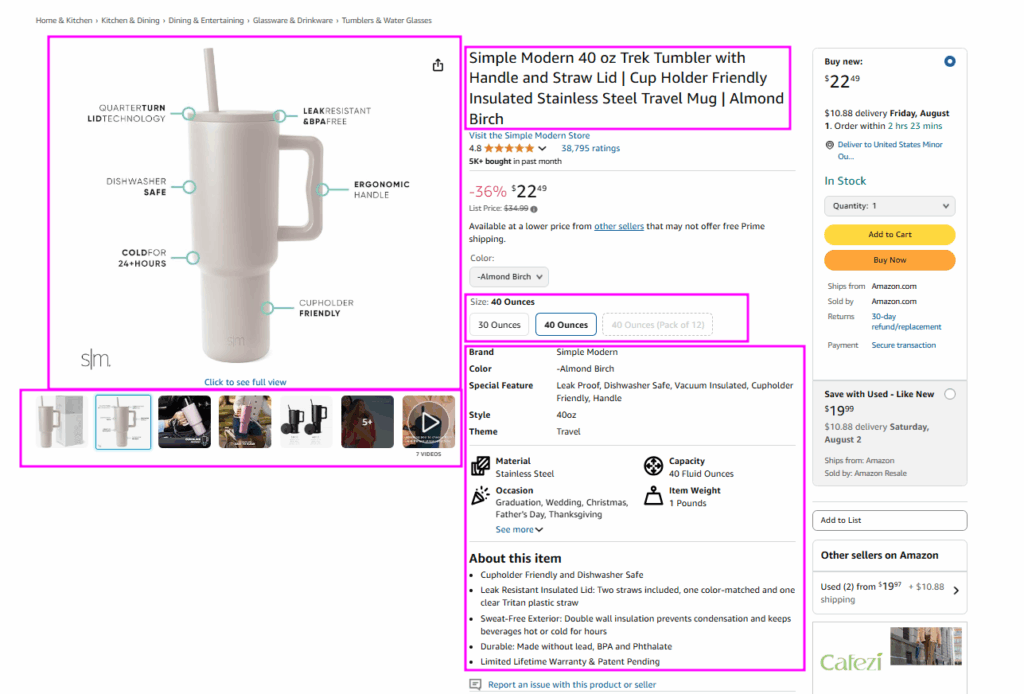
- Be precise and honest: Clearly describe size, material, quantity, and what is included to set the right expectations from the start.
- Use high-quality images: Show the product from multiple angles to provide a comprehensive view and lifestyle photos to help buyers visualize how they will use it.
- Keep bullet points functional: Highlight key features and benefits in simple, readable language, and make it easy for customers to understand why your product is the right choice.
- Add relevant keywords: Use terms your target audience is already searching for, as this boosts visibility and helps the right buyers find you.
- Update regularly: If customers ask questions or leave feedback about missing details, revise your listing promptly to prevent repeated issues.
Accurate, helpful listings lead to happier buyers, fewer complaints, and a stronger Amazon account health score.
4. Respond to Customers Quickly

Slow responses lead to frustrated buyers, negative reviews, and even A-to-Z claims. Amazon expects sellers to respond within 24 hours to maintain a good seller rating, regardless of the day of the week.
To stay compliant and customer-friendly:
- Always respond within 24 hours to avoid penalties and demonstrate to customers that you are reliable.
- Use the Amazon Seller app to get message alerts instantly and reply on the go.
- Set up message templates for common issues, but personalize them to avoid a robotic tone.
- Maintain a polite and professional tone, especially when addressing complaints.
- Pay attention to recurring issues, such as late deliveries or product confusion, and address those areas in your operations.
Fast, thoughtful replies show Amazon and your customers that you value service. It is a simple habit that helps protect your account health.
5. Provide Accurate Product Descriptions

Customers rely on your product listing to know what they are buying.
If the item they receive does not match the description or photos added in your listing, they will likely return it or leave a negative review. Both ways can negatively impact your account health rating.
How to improve your product descriptions:
- Include precise details such as size, color, materials, quantity, and a description of how it functions.
- Use A+ content, including high-quality, real photos from various angles to showcase precisely what the customer will receive.
- Keep the language simple and honest to avoid exaggeration or bold claims.
- Answer common questions right in the description.
- Update listings as needed and make changes if reviews or customer messages indicate confusion.
Accurate descriptions help set the right expectations, reduce misunderstandings, and demonstrate to Amazon that you are a responsible seller.
6. Sell Quality Products

Product quality directly affects your account health. If buyers get items that feel cheap, don’t work, or don’t match the listing, returns and negative feedback can follow, risking listing violations.
To maintain quality:
- List only items you would confidently buy yourself.
- Work with trusted suppliers who meet consistent standards.
- Watch for repeat complaints and respond promptly if issues arise.
- Regularly check product reviews and adjust as needed.
Reliable products lead to fewer returns, better account health ratings, and stronger customer trust, which keep your account in good standing.
7. Adhere to Amazon’s Selling Policies
On Amazon, the rules are not just suggestions; they are binding. They are the foundation your account stands on.
Policy violations and non-compliance are the #1 reason for account deactivation on Amazon, and they can cause you to lose points on your account health rating. Even a minor violation can trigger warnings, listing removals, or, in extreme cases, full account suspension.
To stay compliant and gain points on your account health rating :
- Regularly review Amazon’s Selling Policies and Code of Conduct.
- Check for updates before listing new products or making store changes.
- Respond promptly to policy violation notices and resolve them thoroughly.
- Please keep a record of any past violations to prevent them from recurring.
Compliance is not just about avoiding penalties; it shows that you are serious about your business and your customers, especially in comparison to other sellers.
A clean track record builds trust with Amazon, enhances account stability, and provides more freedom to grow.
Policy violations can feel sudden and scary, but they’re often preventable with the right systems in place. Even minor rule-breaking adds up and puts your entire business at risk.
Pro Tip: If you’re unsure what metrics to track or how often to check them, start with our guide on best practices to maintain healthy Amazon seller account Pro Tip: Learn the most common triggers and how to protect yourself in our comprehensive guide on how to avoid Amazon seller account suspension, it could save your business.![]()
8. Ensure On-Time Delivery
Late deliveries do more than disappoint customers. They can put your account at risk.
Amazon closely monitors your delivery performance, and consistent delays can increase your defect rate, trigger complaints, and even result in suspension from the Amazon marketplace.
Here is how to stay on track:
If you fulfill orders yourself (FBM):
Set realistic shipping timelines, update inventory regularly, and use reliable carriers. Tools like Amazon’s Buy Shipping can help with tracking and ensure you are meeting Amazon’s delivery standards.
If you want fewer headaches:
Consider switching to FBA. Amazon handles storage, packing, shipping, and even customer service, providing you with high-quality products, faster delivery, and giving you peace of mind.
Timely delivery keeps your customers happy and signals to Amazon that you are a reliable seller with a healthy Amazon account health score. Stay consistent, and you will maintain a good Amazon account health score and reputation.
9. Keep an eye on Account Health metrics
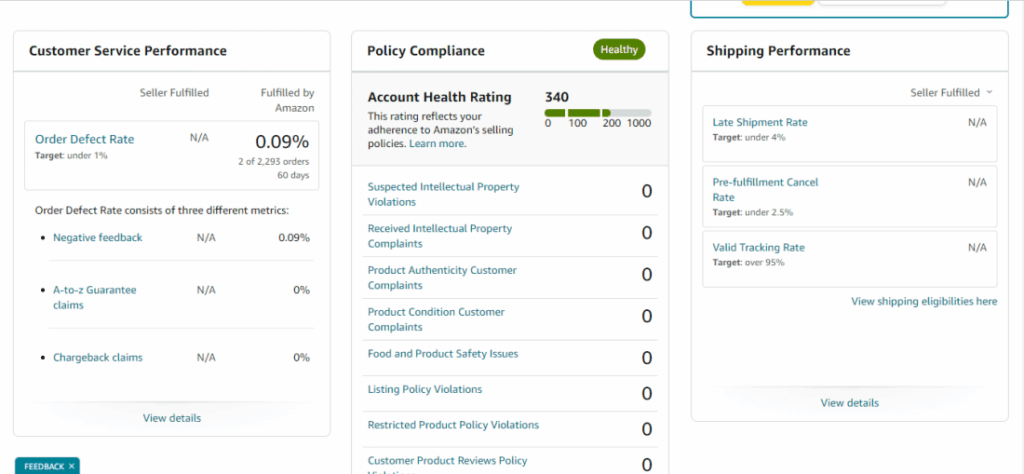
Your Amazon Account Health Dashboard is not just a feature. It is your early warning system.
It shows how your store is performing and flags problems early, so you can act before Amazon does, and prepare stronger appeals if needed.
Here are the key metrics Amazon tracks that directly impact your account status:
- Order Defect Rate (ODR): A high number of negative reviews, chargebacks, or A-to-Z claims will increase this metric, which is a significant concern for Amazon.
- Late Shipment Rate: Late deliveries can negatively impact customer satisfaction and potentially lower your account health rating.
- Cancellation Rate: Cancelling orders before fulfillment signals poor planning and erodes buyer trust.
- Policy Violations: Even minor rule violations get recorded here. Too many can lead to listing suppression or account suspension.
These metrics are not just numbers. They are what Amazon uses to decide whether your account remains in good standing.
Make it a habit to check your Amazon account health score dashboard at least once a week. Regular monitoring helps you identify minor issues early, stay compliant, and demonstrate that you are a proactive and reliable seller.
10. Leverage 3PL or FBA

Shipping issues are one of the fastest ways to damage your Amazon account’s health rating.
Delays, lost packages, or messy deliveries can trigger complaints and lead to higher defect rates.
To avoid this, consider outsourcing fulfillment to Amazon seller account management experts:
- Fulfillment by Amazon (FBA): Amazon takes care of storage, packing, shipping, returns, and even customer service. This helps you meet delivery promises and reduce operational stress.
- Third-Party Logistics (3PL): A reliable 3PL partner outside Amazon can offer similar support. They help you stay on top of inventory, avoid shipping errors, and scale efficiently.
Learn more about cost of Amazon seller account management services.
By handing off fulfillment to professionals, you can:
- Cut down on late shipments and order issues
- Improve your delivery speed and accuracy
- Free up time to focus on growth and strategy
- Build trust with Amazon and your customers
If shipping and logistics are holding you back, outsourcing can be a smart option. Reliable fulfillment supports long-term performance and protects your Amazon account health score.
Outsourcing fulfillment is smart, but full account management takes it further. From monitoring metrics to handling violations and optimizing listings, professional management covers everything. Before deciding, understand the investment.
Check out our breakdown on Amazon account management services cost to see typical pricing and what ROI you can expect from expert support.
Now that you know how to improve Amazon account metrics, let us talk about what new sellers should avoid doing.
Avoiding these common mistakes is just as important as following the right strategies.
Common Mistakes That Can Harm Your Amazon Health Rating
Even sellers with the best intentions can make simple mistakes that put their account health at risk. Here are some of the most common pitfalls and how you can steer clear of them.
Mistake 1# Breaking Amazon’s Listing or Messaging Rules
It is tempting to call your product a “#1 Best Seller” or throw in a “50% OFF” banner in your product listing image. You could have added a gentle request for a review.
But Amazon does not like any of that. And even if it seems harmless, it can lead to a listing removal or a policy violation on your account.
Solution: Keep your listings clean, factual, and focused on the product itself, rather than selling tactics. Adhere to Amazon’s Seller Code of Conduct as if it were your brand’s rulebook.
Mistake 2# Overselling Inventory
When you are having good sales, and suddenly realize that you have just sold some items that are already out of stock.
Now you are forced to cancel, and your Cancellation Rate goes up. It leads to customer disappointment, and Amazon sees this as poor inventory management.
Solution: Use an inventory management tool that syncs in real-time to increase your sales volume and safeguard your Amazon account health score. Always keep a small safety stock as a buffer. It is better to miss one sale than to cancel and hurt your brand.
Mistake 3# Ignoring Negative Feedback
It is never enjoyable to receive a negative review. But pretending it does not exist only makes things worse.
When negative feedback is left unanswered, it can lead to A-to-Z claims, damage your Order Defect Rate, and hurt your account health rating. More importantly, it sends the message that you do not care, and that is something no buyer forgets.
Amazon views this as a warning sign, and your Amazon account health score suffers the consequence.
Solution: Respond quickly and respectfully to negative reviews. Show buyers that you care and want to make things right.
Even a simple apology, refund, or replacement can turn an upset customer into a repeat one. And more importantly, it protects your reputation.
Mistake 4# Poor Packaging and Shipping Practices
The sale does not end when someone clicks “Buy Now.” If a customer receives a damaged product or no tracking update, trust is lost.
And if it happens more than once, Amazon takes notice and affects your Amazon account health score rating.
Solution: Use proper packaging. Do not cut corners. Always include tracking information and upload it promptly.
If it is too much to handle manually, Amazon’s Buy Shipping tool can help automate things and protect you from specific claims.
Mistake 5# Outdated Handling Times
Set a 1-day delivery time to seem more attractive to buyers.
However, if you typically ship within 2–3 days, you are setting yourself up for late shipments, which is one of the fastest ways to damage your account health.
Solution: Be realistic. Set a timeline you can always meet. Under-promise, over-deliver. And if something unexpected arises, such as a holiday rush or personal emergency, update your handling time to maintain transparency.
As per a recent study, 50% of Amazon sellers were generating about $10,000 and over $250,000 monthly in 2025.
So, if you’re ready to follow the given strategies and avoid mistakes, then you’re going to be the next successful seller on Amazon.
Conclusion
Selling on Amazon is exciting, but don’t get so focused on sales that you overlook your Account Health Score. It’s the foundation that decides if your store keeps running or gets suspended.
Health score is a key decision-maker metric for Amazon to decide whether your store will run or be suspended based on accurate information. So make sure you are taking care and building a thriving, trustworthy business.
By actively tracking your score, knowing what affects it, and using the strategies we discussed, you’ll stay compliant, build trust, and grow sustainably.
So, do not wait for a warning, make account health a priority, and watch your Amazon business flourish!
Still doubts? Contact our experts for comprehensive support tailored to your Amazon business needs. Contact Us today!
FAQs
What’s the most important thing for a healthy account?
It is simple: follow Amazon’s rules and keep your customers happy! That means accurate listings, fast shipping, quick replies, and quality products. Do these consistently, and you are all set.
How often should I check my Account Health Dashboard?
Check it at least once a week, but daily is even better. It is your early warning system! Catching a minor issue quickly can prevent it from becoming a huge problem.
What happens if my Account Health Score drops to “At Risk” or “Unhealthy”?
“At Risk” (yellow) is a caution sign, fixing flagged issues fast. “Unhealthy” (red) is a STOP sign; your account is at risk of deactivation, which means no sales will be processed. Fix it immediately!
How is the Amazon Account Health Rating determined?
Your Amazon Account Health Rating (AHR) is your performance report card, where you score out of 1000. Amazon looks at how well you have done over the past six months on things like:
- Order Defect Rate (ODR): Did customers complain, leave bad reviews, or file claims?
- Late Shipment Rate: Were your orders shipped on time?
- Cancellation Rate: Did you cancel orders you could not fulfill?
- Policy Violations: Did you break any of Amazon’s rules, like listing prohibited items or misusing trademarks?
Where can I find my Amazon Account Health information?
Log in to Amazon Seller Central, navigate to “Performance” at the top, and then select “Account Health”. You will see your score and any issues there.
